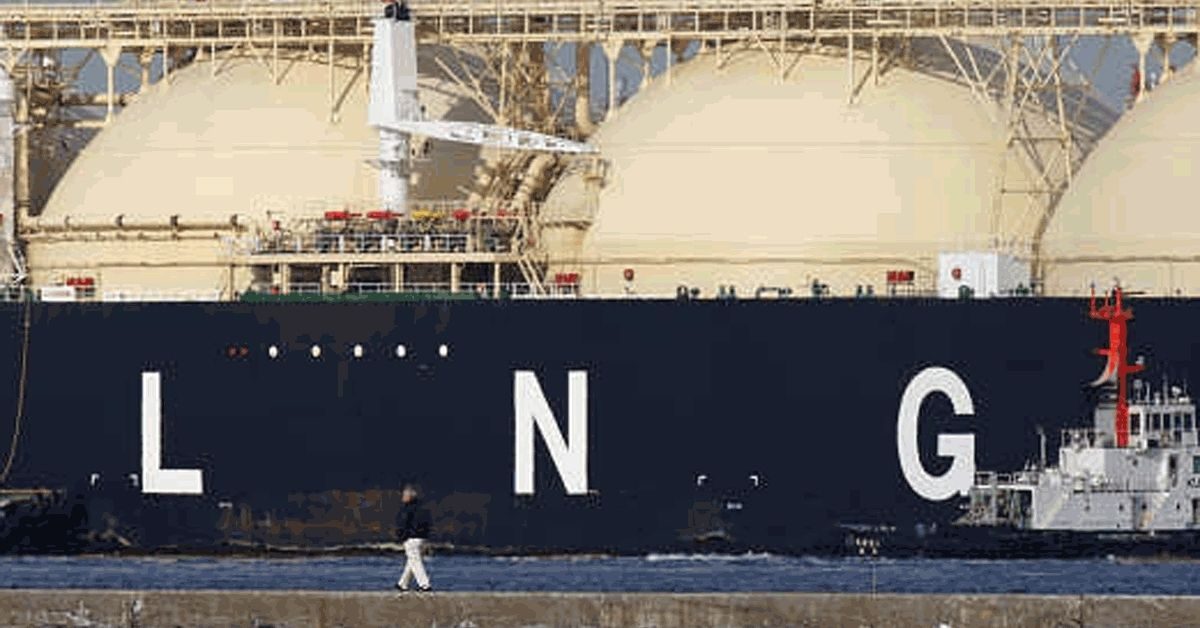Adani Group and French company TotalEnergies’ newly built INR 6,000 crore facility to import LNG at Dhamra on the Odisha coast will start commercial operations at the end of May, the French firm said on Monday.
Adani Group and French company TotalEnergies’ newly built INR 6,000 crore facility to import LNG at Dhamra on the Odisha coast will start commercial operations at the end of May, the French firm said on Monday. The 5 million tonne a year capacity terminal received its first ever shipment of liquefied natural gas – a fuel that will be used to make steel, produce fertilizers and turned into CNG and cooking gas – on April 1.
Qatari ship ‘Milaha Ras Laffan’ docked at Dhamra port on April 1 morning, bringing in 2.6 trillion British thermal units of natural gas in its frozen form (LNG) which will be used to commission the facility.
“This delivery enables the gradual commissioning of the terminal, which is expected to start commercial operations at the end of May 2023,” TotalEnergies said in a press statement.
Karan Adani, CEO of Adani Ports and Special Economic Zone (APSEZ) – the firm that operates the Dhamra port and has leased the LNG jetty to Adani Total Private Ltd – had previously announced the receipt of the first LNG cargo. “This is a huge leap forward not only in access to clean and affordable energy but also in decarbonising India’s energy sector,” he had said earlier this month.
Adani Total Private Limited is a 50:50 joint venture between TotalEnergies and Adani.
The commissioning cargo was supplied by TotalEnergies from its portfolio in Qatar.
“With regasification capacity of 5 million metric tonne of LNG per year, the Dhamra LNG terminal adds more than 10 per cent to India’s regasification capacity, strengthening the country’s position as the world’s fifth largest LNG importer and allowing it to increase the share of natural gas in its energy mix from 8 per cent to 15 per cent by 2030 to reduce its carbon intensity,” the statement said.
Dhamra is the only LNG import terminal in eastern India and only the second on the entire east coast. The country’s five other terminals are on the western coast (three in Gujarat, one each in Maharashtra and Kerala).
“We are pleased to have completed the first delivery of LNG to the new Dhamra LNG terminal, developed in partnership with Adani, with a cargo from Qatar. India wants to develop the use of natural gas to reduce the carbon intensity of its energy mix by replacing coal, and LNG can therefore meet the growing domestic demand. The commissioning of the Dhamra terminal reflects TotalEnergies’ ambition to support India’s energy transition and supply security,” said Thomas Maurisse, Senior Vice President LNG at TotalEnergies.
After all checks, the terminal would be ready to start commercial operations with an expected 2.2-2.3 million tonne of LNG expected to be imported in the first year and a gradual ramp-up to full capacity in the next.
Dhamra is a tolling facility where state-owned GAIL (India) Ltd and Indian Oil Corporation (IOC) have booked capacity. They will import LNG at the terminal which will be re-converted into gas before being piped to refineries and fertiliser units. It will also be converted into CNG for running automobiles and piped into household kitchens for cooking purposes.
It has a 20-year take-or-pay contract to provide regasification services to IOC for 3 million tonne per annum of LNG and 1.5 million tonne to GAIL.
The terminal will be able to berth the widest range of LNG vessels all year round, transport gas via pipelines, trucks or on reloaded vessels. It houses two storage tanks, each of 180,000 cubic meters capacity, amongst the largest in the country.
The capacity can be doubled to 10 million tonne in future by adding a third tank.
Dhamra will be the main supply point on the recently completed Urja Ganga pipeline developed by GAIL, providing gas access to over 35 per cent of India’s population, covering about 20 per cent of the country’s land mass.
Refineries, fertiliser plants, industries and city gas networks in the hinterland will be the major consumers of gas from Dhamra LNG.
LNG is predominantly methane (C1) gas chilled to around (-)160 degrees Celsius where it turns into a liquid at atmospheric pressure, occupying less than 1/600th of the volume it otherwise would. This allows huge quantities of energy to be transported across oceans in specialised vessels.
It is considered as a bridge fuel for India’s energy transition. Last year, the global LNG trade reached around 400 million tonne. Over the past three years, Indian imports have varied between 22 and 24 million tonne representing around 3 per cent of the country’s primary energy basket.







